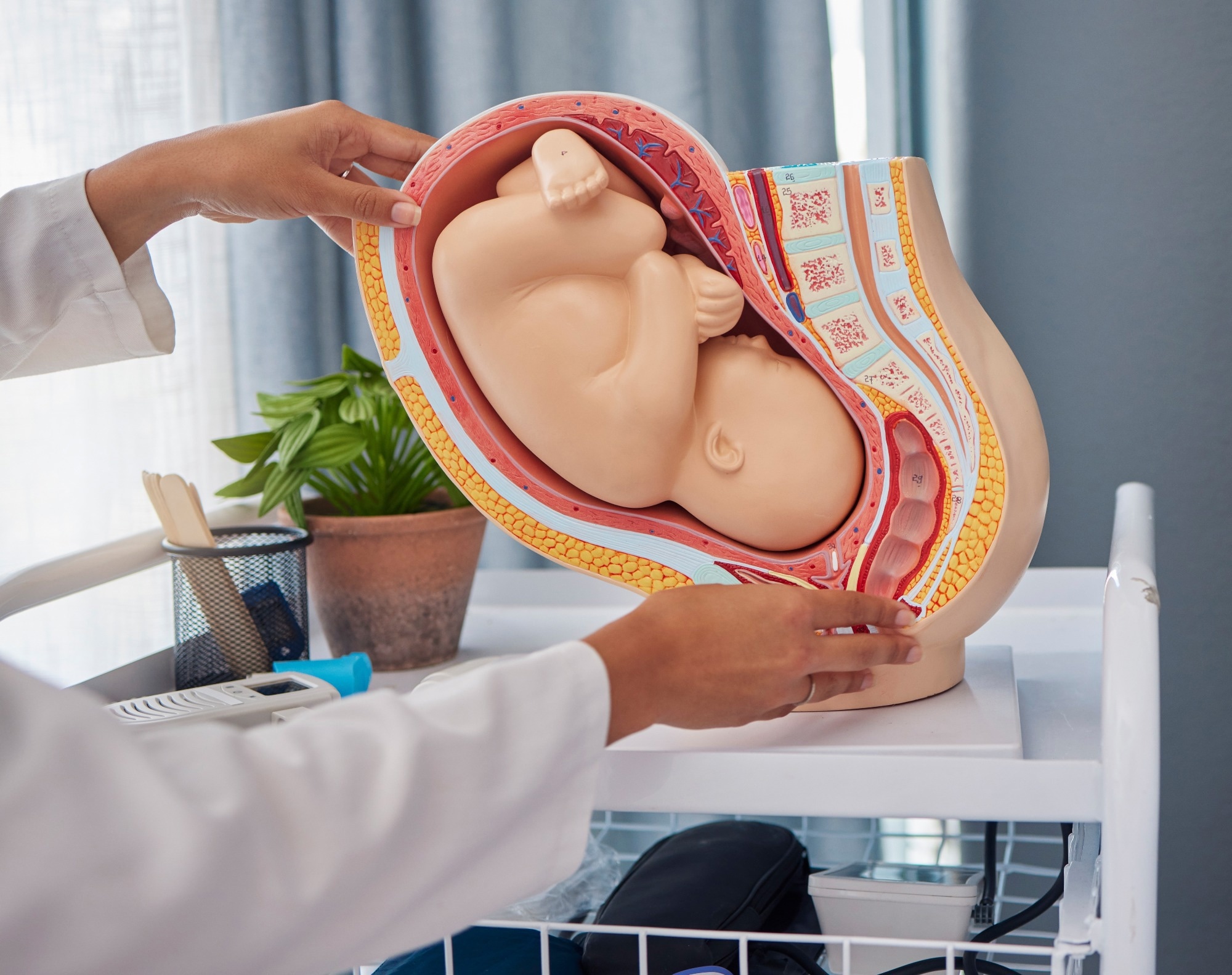In a recent study published in Nature, researchers created a comprehensive digital atlas of fetal brain maturation from a large cohort, detailing structural growth and folding from early pregnancy to two years postnatal, and offered a benchmark for typical brain development.
 Study: Normative spatiotemporal fetal brain maturation with satisfactory development at 2 years. Image Credit: PeopleImages.com - Yuri A/Shutterstock.com
Study: Normative spatiotemporal fetal brain maturation with satisfactory development at 2 years. Image Credit: PeopleImages.com - Yuri A/Shutterstock.com
Background
The development of the human fetal brain, mapping its structural organization to function, has been explored primarily using postmortem data. This information highlighted a scheduled progression of cortical folding and growth, predominantly starting in the second trimester.
This growth is marked by increasing complexity in cortical surface structures and ongoing changes post-birth. The underlying cellular events are essential for functional specialization in adulthood. Disruptions in these early processes can result in significant malformations and functionality loss, as seen with Zika virus infections.
While Magnetic Resonance Imaging (MRI) studies confirm postmortem data and highlight developmental patterns, they are limited by small sample sizes and inconsistent methods; meanwhile, traditional two-dimensional ultrasound (2D US) provides insights but lacks comprehensive, large-scale mapping of fetal brain maturation internationally.
Further research is essential to understand the implications of deviations from this normative fetal brain maturation atlas on long-term cognitive and developmental outcomes.
About the study
Between 2009 and 2016, the INTERGROWTH-21st Project collected three-dimensional ultrasound scans of fetal heads in eight global urban areas. Only women with low-risk pregnancies starting antenatal care before the 14th week were included.
Using a strict protocol, 899 healthy singletons were scanned, and post-birth, their growth was compared to World Health Organisation (WHO) standards. At age two, the children underwent a comprehensive neurodevelopment assessment using the globally recognized INTER-NDA tool.
The study thoroughly curated high-quality US images, emphasizing discernible brain structures. These images underwent alignment, brain extraction, and structural enhancement using convolutional neural networks and manual adjustments.
Using manual and automated segmentation, the research produced a 4D atlas detailing fetal brain development across gestational ages.
The study observed the cerebral hemisphere asymmetry in fetuses. Most images showcased the left hemisphere, aligning with the known fetal positioning in utero. Only one cerebral area exhibited significant volume asymmetry between hemispheres.
As fetal brains developed, increased variability between participants was noted. The study was ethically conducted, with results and tools available on GitHub.
Study results
Volumetric US images from eight international study sites provided a comprehensive look at the fetal brain of humans at a submillimetre resolution. The project incorporated 1,059 3D US volumes from 899 accurately dated fetuses.
These images spanned weekly stages of fetal brain maturation from 14 to 31 weeks of gestation. However, data contributions fluctuated across locations due to differences in image quality.
With an impressive spatial resolution, the atlas was able to delineate the minutiae of cerebral lamination based on gestational age. This depth rivals what is seen in magnetic resonance images and histological sections, illustrating structures like the cortical plate, ventricular zone, and more.
The atlas, when matched week by week, stands shoulder to shoulder with the MRI-based atlas from the Computational Radiology Laboratory (CRL). Despite the inherent differences between 3D US and MRI techniques, the likenesses in tissue boundaries and shapes were quite striking.
To ensure the credibility of the collated image data, meticulous validation processes were employed. Two main strategies, variance component analysis, and standardized mean site differences, revealed only a minute degree of variability that could be traced back to site-based differences.
Further analysis unveiled that while morphological diversity was present, it seemed to increase with advancing gestational age. This suggested that amalgamating data across varying sites was a sound decision.
The dynamism inherent in the healthy maturing brain was laid bare, spotlighting particular periods for different brain regions. An overwhelming majority of these developmental shifts took place between 14 to 31 weeks.
During this window, regions associated with language, such as the insular cortex, showcased notable development. Meanwhile, a detailed assessment across 34 cortical areas illustrated the nuanced variability in their maturation trajectories.
Regarding sexual differences, male and female fetuses did not show substantial discrepancies in brain structure up to the 31st week. This revelation suggests that pronounced sexual characteristics in the brain are yet to manifest.
A groundbreaking observation pertained to the fetal brain's asymmetrical structure and growth rates. There were pronounced size differences between the hemispheres, with the left hemisphere's choroid plexus volume (ChPV) taking precedence from the 14th week onward.
This dominance dwindled as gestation progressed. Despite the seemingly bilateral symmetry, unique regional differences became evident at various developmental milestones.
As for the brain's growth, there was a substantial increase in total brain volume. This growth correlated well with established head circumference benchmarks. Also, there were consistent growth rates between the brain's hemispheres.
To further bolster the study's claims, brain scans excluded initially due to moderate quality were reviewed. These scans aligned well with primary data, further reinforcing the study's findings.
Lastly, a two-year follow-up of infants showcased most of them aligning well with WHO standards regarding growth, cognitive abilities, motor skills, and behavior. Only a tiny fraction deviated in visual acuity and contrast sensitivity, proving the study's reliability.